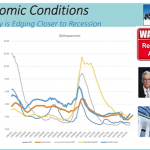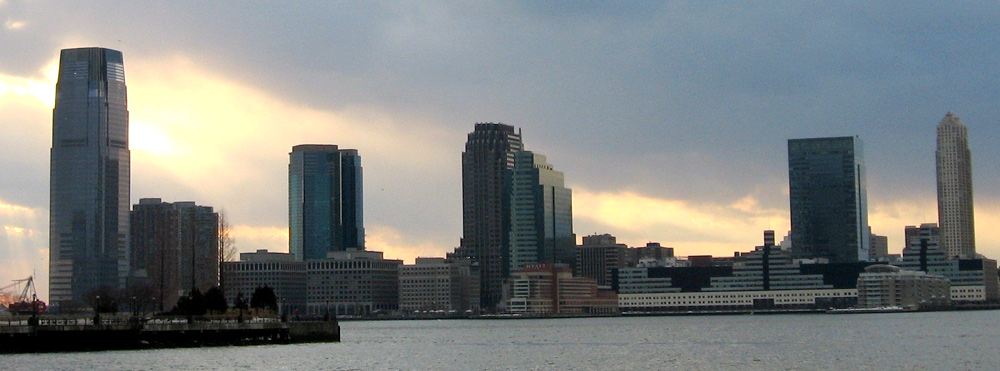New Jersey Future Blog
By the Numbers: County Population Estimates Defy Earlier Trends
April 28th, 2010 by Tim Evans
Is the sudden, recent population growth in older, more urbanized counties in the Northeast a short-term phenomenon? Or has the exodus from New York City and northern New Jersey to the Pocono counties of northeastern Pennsylvania run its course?
The Census Bureau recently released county population estimates for 2009, and some of the results in New Jersey are a striking departure from recent patterns. In particular, it appears that the exodus from New York City and northern New Jersey to the Pocono counties of northeastern Pennsylvania (described in New Jersey Future’s 2006 report, Moving Out) may have run its course. And the flipside is that older, more urbanized counties that long ago developed the last of their available lands are suddenly growing faster than they have in years, even decades.
Consider the following data points from the new county estimates:
- Whatever the reason—the 2008 run-up in gasoline prices suddenly calling into question the wisdom of the “drive till you qualify” approach to home-buying; the collapse of the housing bubble; or the early signs of demographic changes portending a return to the cities, as argued by real estate expert Jeffrey Otteau at New Jersey Future’s recent Redevelopment Forum—the exodus to eastern Pennsylvania appears to have slowed down considerably. Pike and Monroe counties, in the Poconos, used to be the two fastest-growing counties in the entire northeastern United States, but they have tailed off in the latter half of the 2000s. Monroe County had already been overtaken by several New Jersey counties (and by Northampton County, Pa., in the Lehigh Valley) a few years ago, and now Pike’s annual growth has come back down to earth as well. For 2008-2009, two New Jersey counties (Somerset and, surprisingly, Hudson) actually had higher growth rates than Pike.
- As a more concrete illustration, looking at all 21 New Jersey counties plus the four eastern Pennsylvania counties that border northern and central New Jersey, the top five fastest-growing counties for 2004-2005 were: Pike (Pa.), Monroe (Pa.), Cumberland (N.J.), Northampton (Pa.) and Gloucester (N.J.). But for 2008-2009, the top five were much less dominated by Pennsylvania : Somerset (N.J.), Hudson (N.J.), Pike (Pa.), Union (N.J.) and Ocean (N.J.). Two additional New Jersey counties—Passaic and Middlesex—outpaced the next fastest-growing Pennsylvania county, Northampton. And three more—Cumberland, Gloucester and Bergen—grew faster than Monroe. All of this is a dramatic change from what has been happening since 1990.
- For the single year 2008-2009, the previous year’s fastest-growing county, Cumberland, has fallen to seventh place, and Gloucester, which had taken top honors for several years earlier in the decade, is in eighth. Instead, the top spot has been reclaimed by Somerset, which had been the fastest-growing county in the 1990s. More remarkable are most of the other counties that grew faster than Cumberland and Gloucester over the last year—Hudson, Union, Ocean, Passaic and Middlesex. Of these, only Ocean has habitually been among New Jersey’s fastest-growing in the 2000s; the other four have not been among the state’s population growth leaders in many years.
- The turnaround is especially notable for Hudson County, which had been losing population earlier in the decade. In fact, Hudson had been losing population every decade since 1930 before staging something of a recovery in the 1990s. After growing by 10 percent in the 1990s, its population began slipping again, decreasing by 1.5 percent between 2000 and 2004 and declining each year up to 2007 (in fact, its population is still lower in 2009 than it was in 2000). But it posted a 0.46 percent gain for 2007-2008 and an even bigger 0.98 percent gain for 2008-2009. Remarkably, Hudson actually grew faster over the last year than any of the eastern Pennsylvania counties that had previously eclipsed all of New Jersey’s counties in terms of growth rates.
- Only three New Jersey counties posted population losses for 2008-2009: Sussex, Warren and Cape May. Cape May has lost people every year since 2000, but the two northwestern counties are not accustomed to population loss (although Sussex lost population last year, too): Sussex grew by 4.3 percent in the early part of the decade (2000-2004), ranking it eighth among New Jersey’s 21 counties, and Warren scored the third-highest growth rate for that period at 6.2 percent. Are the same factors that are slowing the exodus to the Poconos also at work within New Jersey, steering growth back toward the urban core and away from the exurban fringe counties that were growing faster in the first half of the decade?
- Most New Jersey counties’ numerical growth between 2008 and 2009 was less than or equal to what they had averaged between 2000 and 2004. Only five counties experienced absolute population gains over the last year that appreciably exceeded their annual average increases early in the decade: Bergen, Passaic, Essex, Hudson and Union. Interestingly, these five counties of the northern New Jersey “urban core” are the state’s five most built-out counties. While growth is cooling off in the rest of the state, relative to the early years of the 2000s, it is accelerating in these most urbanized counties.
Numerous aspects of the new 2009 county population estimates point toward an attenuation of the expansion of New Jersey’s exurban fringes—both in the north, where the frontier had already crossed the Delaware River into eastern Pennsylvania, and in the south, where Philadelphia-centered growth was pushing into southern Gloucester County and even into northern Salem and Cumberland—and a resurgence in the state’s already-built counties, particularly in the north. It remains to be seen whether these changes are merely short-term responses to high gasoline prices and the collapse of the housing market, or if they represent early signs of a long-term trend toward redevelopment becoming the dominant development paradigm.
Related Posts
Tags: Demographics, Metropolitan issues, Migration, Population

















The only hope for the future sustainability and competitiveness for New Jersey is the redevelopment of the extraordinarily unused land, parking lots and empty buildings in with in the five to 12 minute walk around New Jersey’s key infrastructure assets, that it its 251 train and transit stations – not including the over 35,000 bus stops. Most of these, particularly the train stations are the logical location for affordable, sustainable, green energy conscious growth of housing and jobs in the future. Most of these station are located in our more urban counties. This new growth is happen despite the setbacks in a state wide plan for growth and redevelopment in urban areas are which have been shut down in the past years.
This article is interesting, but quite frankly it is another trend. It seems to me that too much planing is about tracking the trends. We must as as state get in front of the trend with some pro active planning and urban design and financial incentives.
Based on the positive comments we received yesterday at the the Transaction conference in AC, the State Plan and all municipal Master Plans should impost the transit transects, that is the three circles for the five and 12 minute walk and additionally a 2 mile bike ride with the center on the train stations. With in this first transect, call TT6 transit transect 6] containing 162 acres, should be the first priority for development and it is within this area a greater percentage of the sales tax for new building with in this transect should go directly to the municipality similar to the hotel occupancy tax. The municipalities need incentive to prepare these new revitalization plans.
The state needs fresh ideas and policies. The policies and land use of the past now controlled by the older generation of baby boomers are inappropriate for the new generation comnig up. Too many baby boomers with their large houses in suburban locations, multiple cars, and fat 401 k and compound derivatives, will not change. I don’t know what ever happened to the sharing, love and peace -Woodstock generation , but as far as I am concerned the have failed to fulfill their destination and have certainly screwed up the entire humanized, land use, transportation system. A look around any major train station and the view along our arterials testify to that.
If you want a trend talk to current undergraduates. New ideas for a new generation.
Tony,
We actually have several projects underway that will be addressing the issues you raise.
First, I’ve recently come up with a working definition of “urban” that’s designed to alert the new administration and others that when we talk about redevelopment of urban areas, we’re talking about a lot more than just the 8 cities (Newark, Jersey City, Paterson, Elizabeth, Trenton, Camden, New Brunswick, and Atlantic City) that the State Plan calls our “urban centers”. My criteria end up characterizing just over 200 of the state’s 566 municipalities as “urban” in the sense that they are almost fully developed and at relatively high densities.
Another, longer project that’s just getting underway is an effort to identify barriers to redevelopment (by talking to the people who actually do it) to find out what prevents more redevelopment from happening. Using what we learn, we hope to be able to propose specific policy changes that will level the playing field and incentivize municipalities to plan for redevelopment.
Finally, I’m working on assembling an inventory of transit stations and using a collection of data items to identify the most promising candidates for TOD. In fact, I’m told that you had your students in one of your studios collect some info about vacant or underutilized land around train stations — I might be contacting you soon to ask more about that!